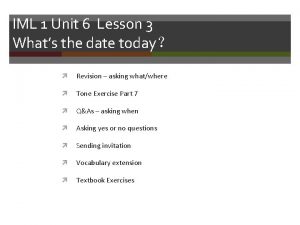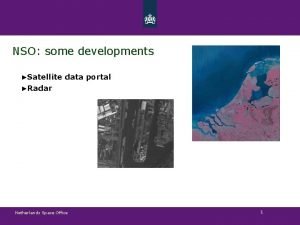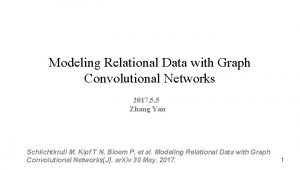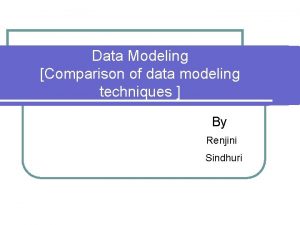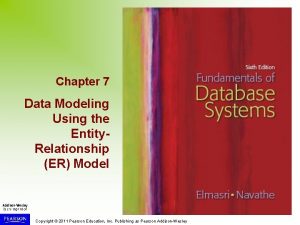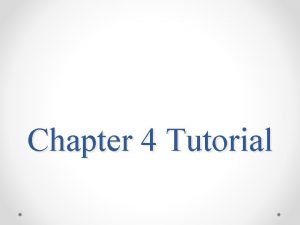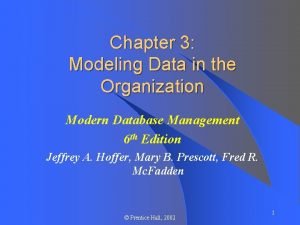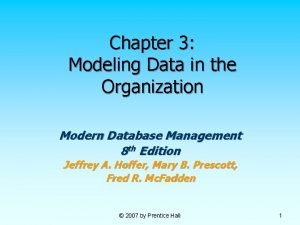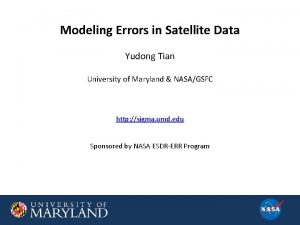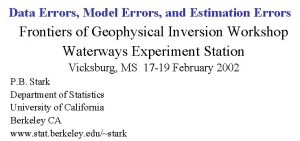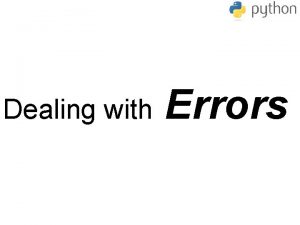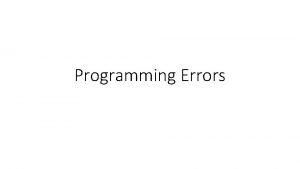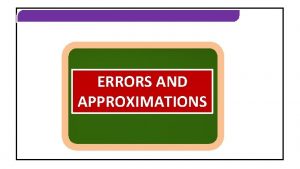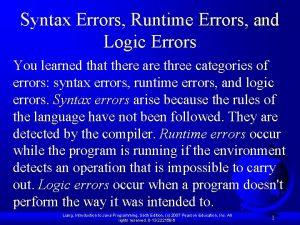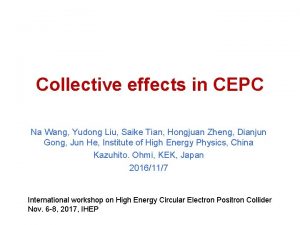Modeling Errors in Satellite Data Yudong Tian University
















- Slides: 16

Modeling Errors in Satellite Data Yudong Tian University of Maryland & NASA/GSFC http: //sigma. umd. edu Sponsored by NASA ESDR-ERR Program

Optimal combination of independent observations (or how human knowledge grows) Information content 2

“Conservation of Information Content” 3

Why uncertainty quantification is always needed Information content 4

The additive error model 1. Most commonly, subconsciously used error model: Ti: truth, error free. Xi: measurements, b: systematic error (bias) 2. A more general additive error model: 5

The multiplicative error model A nonlinear multiplicative measurement error model: Ti: truth, error free. Xi: measurements With a logarithm transformation, the model is now a linear, additive error model, with three parameters: A=log(α), B=β, xi=log(Xi), ti=log(Ti) 6

Correct error model is critical in quantifying uncertainty Xi Xi Ti Ti 7

Additive model does not have a constant variance 8

Additive error model: why variance is not constant? -- systematic errors leaking into random errors 9

The multiplicative error model predicts better 10

The multiplicative error model has clear advantages • Clean separation of systematic and random errors • More appropriate for measurements with several orders of magnitude variability • Good predictive skills Tian et al. , 2012: Error modeling for daily precipitation measurements: additive or multiplicative? to be submitted to Geophys. Rev. Lett. 11

Spatial distribution of the model parameters A B σ(random error) TMI AMSR-E F 16 F 17 12

Probability distribution of the model parameters A B σ TMI AMSR-E F 16 F 17 13

Summary • A measurement without uncertainly is meaningless • Wrong error models produce wrong uncertainties • Multiplicative model is recommended for fine resolution precipitation measurements Tian et al. , 2012: Error modeling for daily precipitation measurements: additive or multiplicative? to be submitted to Geophys. Rev. Lett. 14

Extra slides 15

Summary and Conclusions • Created bias-corrected radar data for validation • Evaluated biases in PMW imagers: AMSR-E, TMI and SSMIS • Constructed an error model to quantify both systematic and random errors 16
 Xie gei tian shang de ni
Xie gei tian shang de ni Helen c. erickson nursing theory
Helen c. erickson nursing theory Relational vs dimensional data modeling
Relational vs dimensional data modeling E e e poem
E e e poem Chi wanfan
Chi wanfan E-portfolio background
E-portfolio background Tian tan buddha
Tian tan buddha Nato no fly zone
Nato no fly zone Best practice etl architecture
Best practice etl architecture Nso.hh
Nso.hh Modeling relational data with graph convolutional networks
Modeling relational data with graph convolutional networks Data modeling techniques
Data modeling techniques Data modeling using entity relationship model
Data modeling using entity relationship model Data warehouse modeling tutorial
Data warehouse modeling tutorial Modeling data in the organization
Modeling data in the organization Modeling data in the organization
Modeling data in the organization Qlik circular reference
Qlik circular reference




